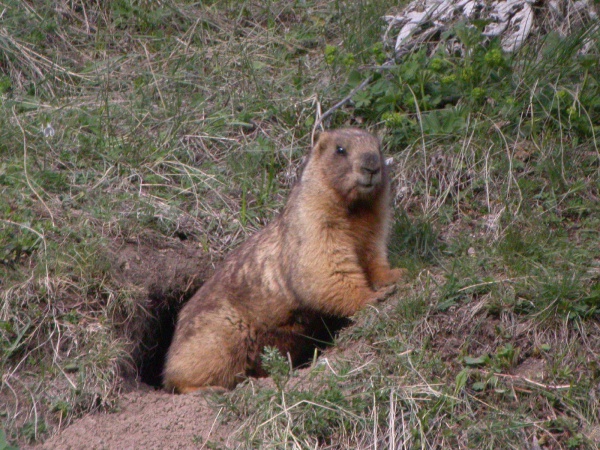Facts About Gray marmot
The gray marmot, also known as the grey marmot or Altai marmot, is a captivating rodent belonging to the squirrel family, Sciuridae. Among the larger members of the genus Marmota, these marmots inhabit the mountainous grasslands and shrublands of central Asia. Their range extends across Xinjiang Province in China, southeastern Kazakhstan, Kyrgyzstan, Mongolia, and the Altai and Tien Shan Mountains in southeastern Siberia, Russia. These social creatures reside in burrows and hibernate for a significant portion of the year.
Gray marmots are quite robust, typically weighing between 4 to 6.5 kg, with some individuals reaching up to 8 kg just before hibernation. They possess a sturdy build, short tails, and distinctive fur coloration. These marmots flourish in mountain meadows and steppes, feeding on various plants throughout the year. They prefer elevations between 150 to 4,000 meters, opting for well-drained slopes ideal for burrowing.
Behaviorally, gray marmots live in social groups known as extended families, with several individuals sharing a burrow. They hibernate for 7–8 months, beginning in the fall and reemerging in May. Reproduction commences in early May, with a gestation period of approximately 40 days. Female marmots typically give birth to 2–6 offspring. Predators of gray marmots include wolves, foxes, dogs, polecats, and various birds. These marmots utilize a range of communication methods, including alarm calls, vocalizations, and glandular secretions.
From a taxonomic perspective, the gray marmot is a Palearctic species in the subgenus Marmota. It is closely related to the forest-steppe marmot and has two recognized subspecies. The bobak marmot is considered a sister species to the gray marmot. These marmots have evolved an annual cycle of hibernation, reproduction, and growth to adapt to the challenging conditions of their habitats.

 Uzbekistan
Uzbekistan